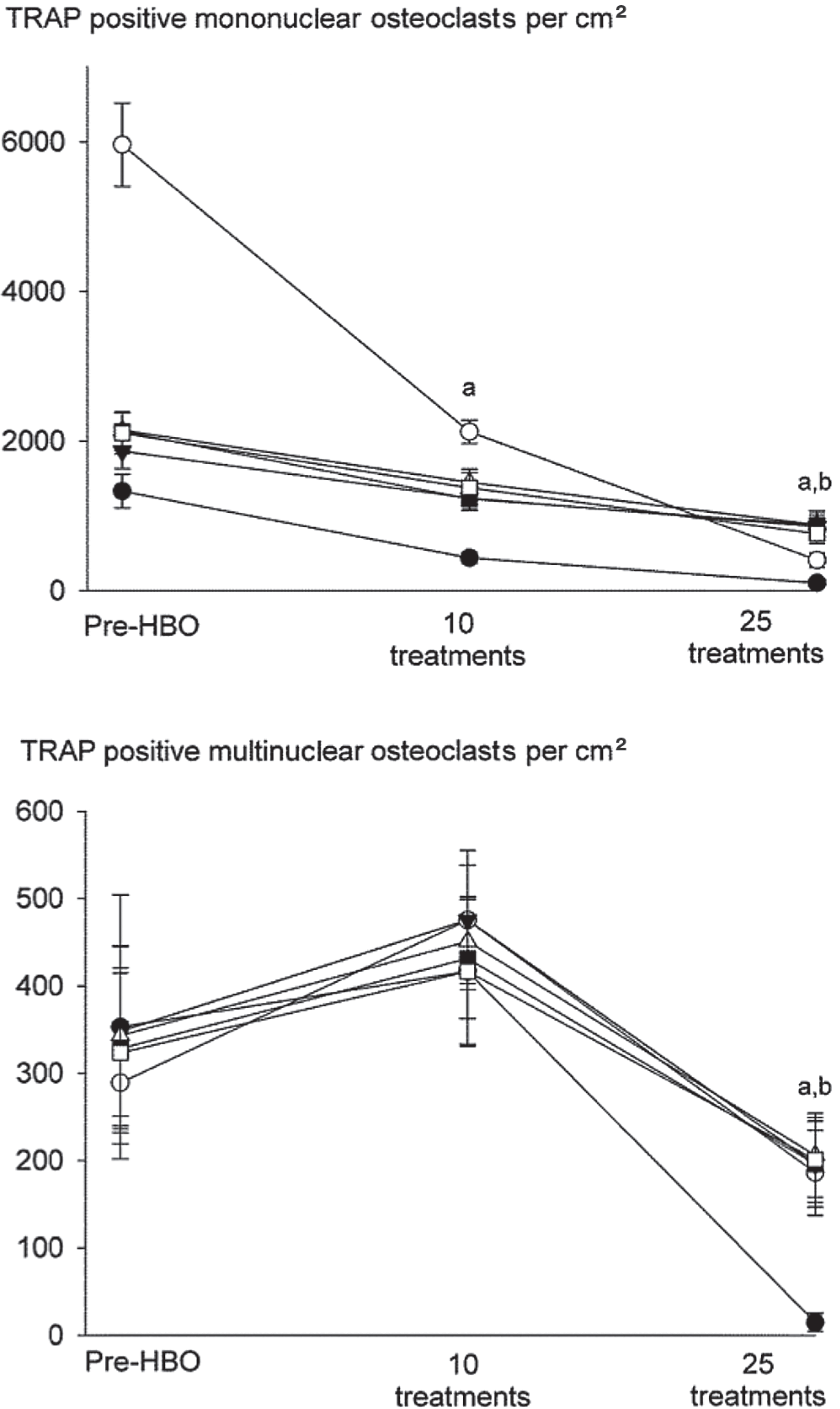Figures & data
Figure 1. Daily HBO therapy suppresses RANKL-induced osteoclast formation in a treatment number-dependent manner. Human PBMCs were incubated in the presence of RANKL (30 ng/mL) and M-CSF (50 ng/mL), stained for TRAP, and the total number of TRAP-positive osteoclasts quantified. Representative images of RANKL-treated TRAP-stained cultures from pre-HBO group (panel A), 10 HBO exposures (B), and 25 HBO exposures (C) (magnification ×40). Arrows show examples of multinucleated osteoclasts and arrowheads show examples of mononuclear osteoclasts. Data are expressed as mean ± SEM (n = 6).

Figure 2. Daily exposure to HBO suppresses RANKL-induced bone resorption in a treatment number-dependent manner. Human PBMCs were incubated on bone slices in the presence of RANKL (30 ng/mL) and M-CSF (50 ng/mL) for 21 days. Following incubation, the percentage of bone surface displaying resorption pits was analyzed by reflected light microscopy. Control cultures (panel A), pre-HBO (B), 10 HBO treatments (C), and 25 HBO treatments (D). Values are mean ± SEM (n = 6).

Figure 3. Mononuclear osteoclasts are more sensitive to the inhibitory effect of HBO than multinuclear osteoclasts. Human PBMCs were obtained from patients undergoing HBO and treated with RANKL (30 ng/mL) and M-CSF (50 ng/mL) for 12 days before staining for TRAP. The numbers of mononuclear osteoclasts (with 1–2 nuclei) and multinuclear osteoclasts (with ≥ 3 nuclei) were quantified. Basal control cultures consisted of human PBMCs incubated in M-CSF (50 ng/mL) alone. Data are mean ± SEM (n = 6). a p < 0.05 relative to pre-HBO.

Short-term HBO promotes RANK and Dc-STAMP mRNA expression in osteoclasts derived from human peripheral blood monocytes, while long-term HBO suppresses it. Values are expressed as RQ relative to pre-HBO using the ΔΔCT methodology. For all groups, expression has been normalized to that of β-actin. Values are mean (SEM); n = 6

